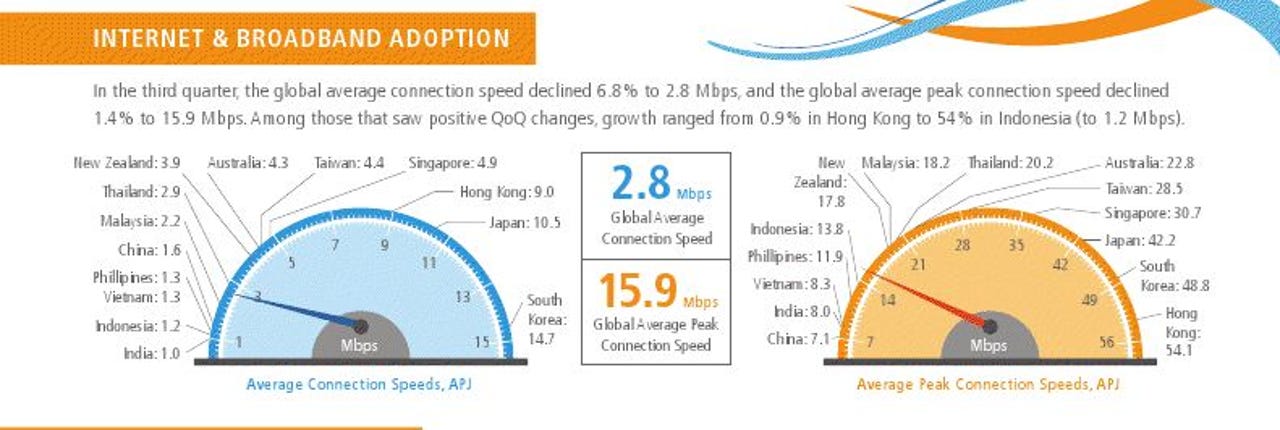Asian countries improve connection speeds despite global decline

Connection speeds worldwide fell between the second and third quarters last year, but most Asian countries continued to improve their connectivity. Incidentally, half of global cyber-attack traffic now comes from the region.
According to the Akamai Third Quarter 2012 State of the Internet report released Thursday, the global average connection speed dropped by 6.8 percent to 2.8Mbps in the third quarter, compared with the second quarter.
The average peak connection speed, or maximum connection speeds across all of the unique IP addresses in a particular geography, also dropped 1.4 percent to 15.9Mbps.
However, the global average connection speed continued to increase, growing 11 percent year over year.

Asian countries lead connection speeds, most show improvements
Consistent with Akamai's second-quarter report, South Korea, Japan, and Hong Kong led in average connection speeds by country at 14.7Mbps, 10.5Mbps, and 9Mbps. All three countries also topped the list of high global broadband connectivity, defined as more than 10Mbps.
Overall, the average connection speed of most countries grew from the second quarter to third quarter. Indonesia experienced the strongest quarterly growth at 54 percent to 1.2 Mbps, followed by Taiwan growing by 16 percent to 4.4 Mbps and China growing 11 percent to 1.6 Mbps.
However, for the quarter, Japan's average connection speed fell 2.1 percent. Singapore, Australia, Thailand, and Vietnam also joined Japan in seeing average connection speeds fall, with Vietnam registering a 21 percent loss to 1.3 percent, the most significant fall among the Asian countries.
Attacks from Asia
It was also found that 51 percent of attack traffic originated from the Asia-Pacific region, followed by 25 percent in Europe, 23 percent in North and South America, and 1 percent in Africa. Attack traffic had decreased in most parts of the world compared to the second quarter, and only the Asia-Pacific region saw an increase of 13 percent.
This was primarily due to the doubling of the percentage of attack traffic coming from China. In the third quarter, attack traffic from China stood at 33 percent, compared to 16 percent in the quarter before.
According to Akamai, China's increase in attack traffic is "somewhat surprising." The top ports targeted by attacks observed to be originated from China remained fairly high, but for other countries on the list, attack counts declined sharply after the top one or two targeted ports, the report explained.
Other Asian countries making the top 10 originating country list, however, saw a decline in attack traffic. Taiwan decreased from 5.4 percent to 4.5 percent, India dropped to 2.5 percent from 2.9 percent, and South Korea fell from 2.1 percent to 1.5 percent.